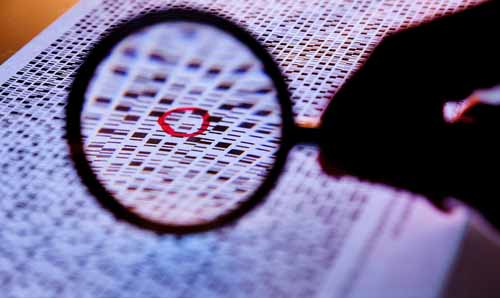 Molecular genetics was part of the 20th century revolution in our understanding of DNA genes -
starting with the work of Watson and Crick relating to the structure of DNA in the 1950s.
Molecular genetics was part of the 20th century revolution in our understanding of DNA genes -
starting with the work of Watson and Crick relating to the structure of DNA in the 1950s.Could there be a corresponding revolution in memetics? Many have looked forwards to this. For example, here is Robert Aunger, Writing in The Electric Meme.
It's time for a new scientific revolution, for the beginning of a “molecular memetics” to mirror the revolution in biology that occurred with the identification of physical genes.
Here's Johnnie Hughes, writing on how the lack of observable memes inside brains is a problem:
We don't know what a meme looks like.`That doesn't necessarily mean that we should dismiss their existence—the existence of Mendel's genes was mere speculation for a century before Watson and Crick “saw” them for the first time with an X-ray diffractor - but it certainly presents a barrier to widespread acceptance.It is probably true that a greater understanding of how ideas are represented in brains would be a boost for memetics - and lead to new discoveries in the area. However, there will probably not be a "molecular memetics" for a long time. According to our current understanding of how the brain works, memories are stored in synaptic strengths - which are more electro-chemical than molecular. It seems likely that we will understand how the brain works as a neural network long before we go down to the level of molecules. Indeed, we have had the basics of this understanding since the 1980s - when the "Parallel Distributed Processing" works of Rumelhart and McClelland were published. These contained convincing computer simulations that illustrated the basics of how information was stored and processed in the brain. These simulations exhibited similar failure modes to their organic counterparts.
Furthermore, we don't need to understand the details of how brains work to be able to have a strong science of memetics. Genetics was doing pretty well before the 1950s - with population genetics. If memetics could get to where genetics was in the 1930s, that would represent dramatic progress in the field.
Although we can't really measure meme frequencies inside brains yet, memes need to pass out of the human brain in order to reproduce - and then we can measure their frequencies much more easily. This is particularly true of memes that travel through electronic networks. Then, the anatomy of the meme is often exposed and is easily visible to scientists.
By focusing on these digital representations of memes, memetics should now be able to make good progress. That doesn't necessarily mean treating the brain entirely as a black box. We can still use inductive inference to explore hypotheses about the workings of the brain - based on its inputs and outputs - as is routinely done by psychologists. However, we don't need to wait for neuroscience to produce a "Watson and Crick" moment before we can get on with the business of studying memes scientifically.










No comments:
Post a Comment